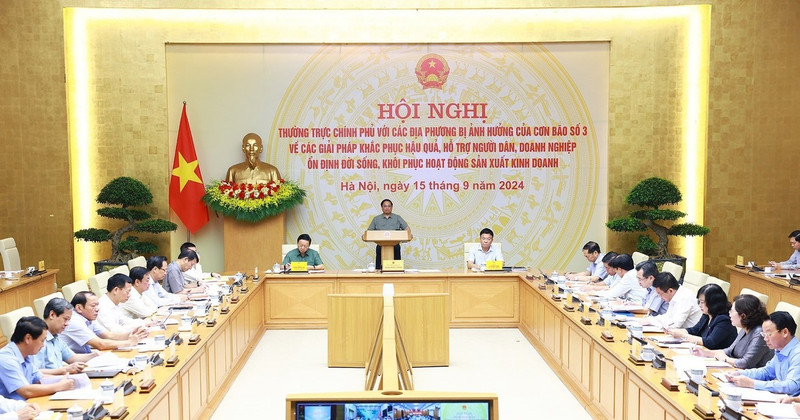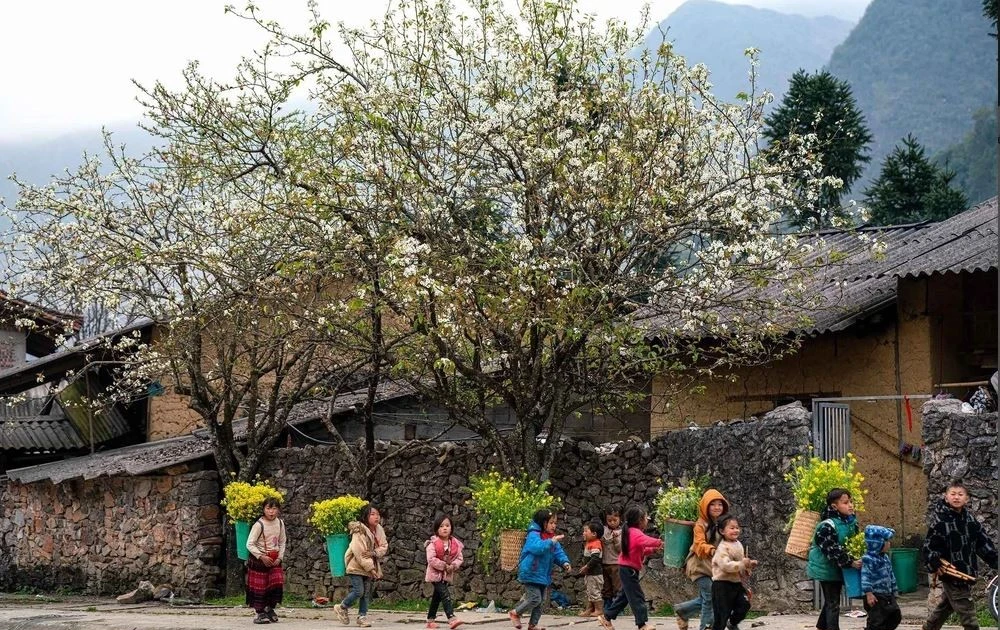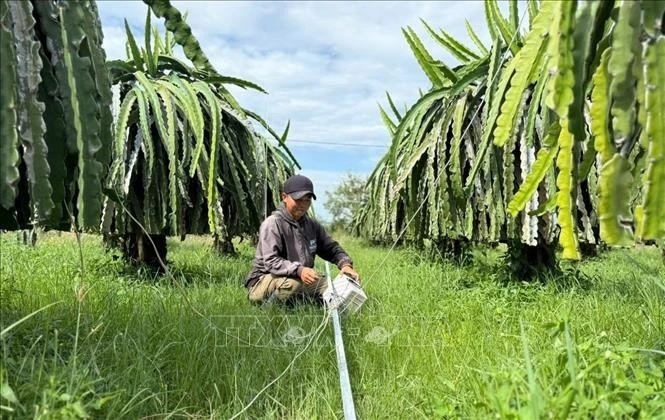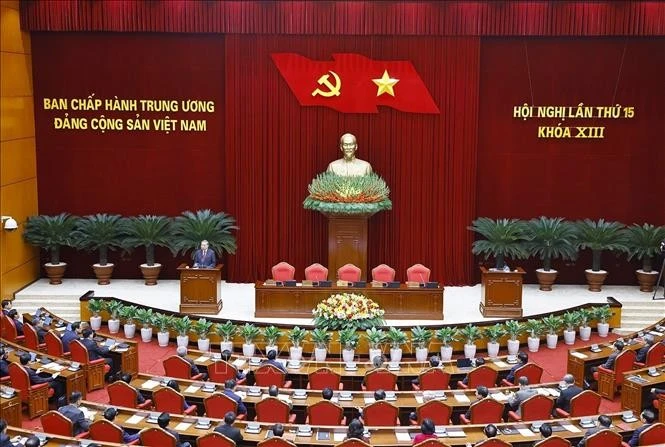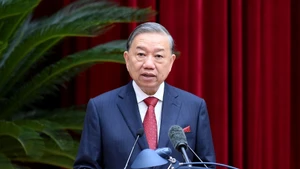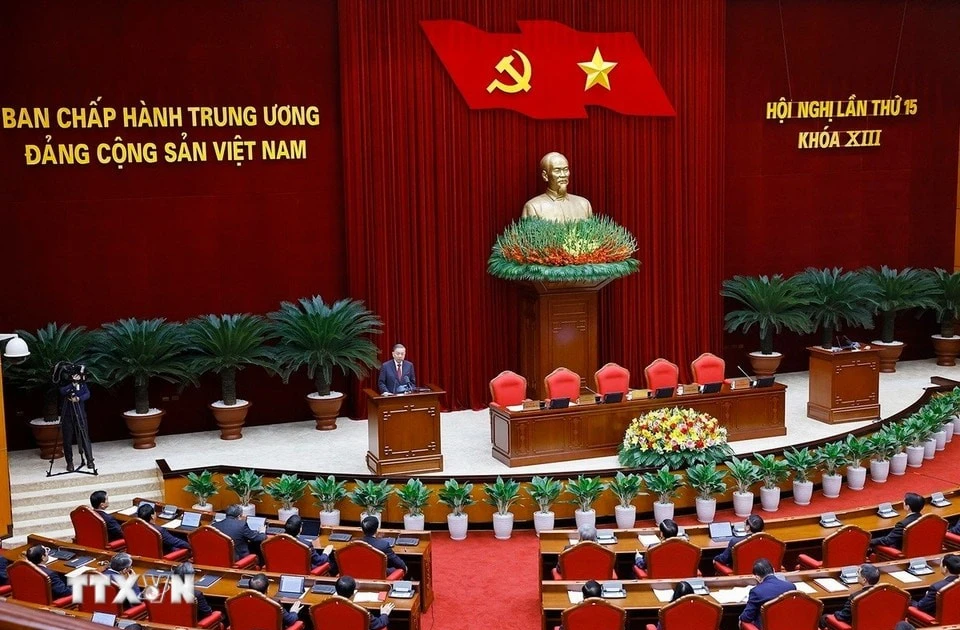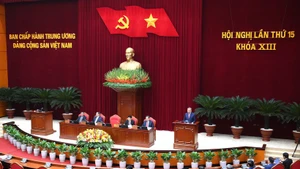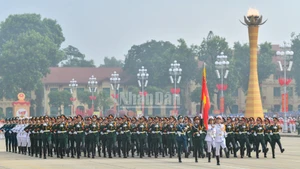The event was connected to the Standing Office of the National Steering Committee for Natural Disaster Prevention and Control and 26 northern provinces and cities.
With the spirit of "all for the people, for the country's development," the PM requested participants to review the situation, discuss, give opinions, and propose tasks and solutions to urgently address the aftermath, quickly stabilise life, resume production and business activities, thus promoting economic growth.
Since the super typhoon formed and entered the East Sea, with a risk of affecting Vietnam's mainland, the Politburo and the Government have directed and closely monitored developments to have prompt response. Leaders of the Party, State, and members of the Politburo have directly visited affected areas to inspect and urge efforts in preventing, responding to, and addressing the consequences caused by the natural disaster.
Notably, the Prime Minister issued nine urgent dispatches directing the work of preventing, responding to, and overcoming the consequences of the typhoonas well as subsequent floods, landslides, and inundation; ensuring the safety of Thac Ba hydropower reservoir in Yen Bai province, Hoang Long dike in Ninh Binh province; and regulating the hydropower reservoirs in Lai Chau, Son La, and Hoa Binh provinces. Relevant ministries, sectors, and local authorities, especially key forces, have coordinated closely and directly participated in preventing, combating, responding to, and overcoming the consequences of the storm.
The public trusted, supported, and stayed united in implementing disaster prevention, response, and recovery efforts in accordance with the guidance, contributing to minimising damage.
According to the Ministry of Agriculture and Rural Development, the Government, the PM, and relevant ministries, sectors and local authorities proactively directed early and from afar and kept close watch on the developments of the storm and floods.
The forces, particularly the army, police, and grassroots disaster response forces, have strictly adhered to the PM's directions, thereby guiding 51,319 fishing boats and vehicles, transport ships operating at sea with 219,913 people to leave dangerous areas or stay at safe shelters; organising the evacuation of 52,979 people on fish farms, aquaculture watchtowers, and weak houses to safe places; evacuating and relocating 74,526 households with 130,246 people in flood-prone areas to safe locations.
The army have mobilised 438,275 personnel and 6,642 vehicles to respond to the typhoon; 107,911 personnel and 2,142 vehicles to address floods, landslides, and flash floods. Meanwhile, more than 150,000 police officers and soldiers have been mobilised to participate in the response and recovery efforts following Typhoon Yagi. Local authorities, disaster response teams, youth unions, and other forces have been also mobilised to implement response measures and address the disaster aftermath.
Party committees and local authorities have effectively directed communication efforts, providing timely information for the public about the developments of the storm and floods, as well as directions from the Government, the PM, and disaster response and search and rescue agencies at all levels, to ensure proactive respond to the natural disasters.
Statistics from localities show that as of 6:00 am on September 15, heavy rains and floods, landslides triggered by super Typhoon Yagi, one of the strongest to hit Vietnam in decades, had left 281 dead and 67 missing, and 1,921 injuries. Nearly 232,000 houses were damaged; over 190,000 ha of rice fields, almost 48,000 ha of crops and nearly 32,000 ha of fruit trees were inundated and devastated; 3,269 fish farming cages were destroyed or swept away; and over 2.6 million poultry and cattle died.
Many shops, offices, and schools were unroofed and damaged; numerous electricity and telecommunication poles and mobile network towers were toppled; and urban trees were uprooted or broken. There were widespread power outages and communication disruptions in Quang Ninh, Hai Phong, Thai Binh, Hai Duong and Hanoi.
